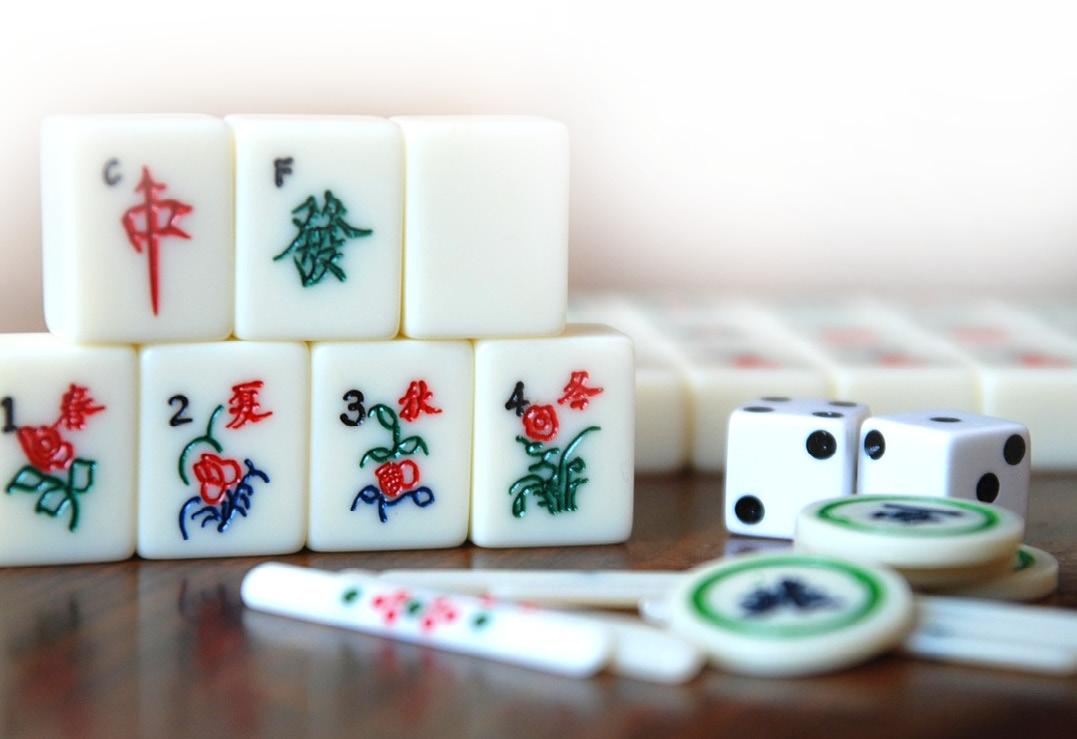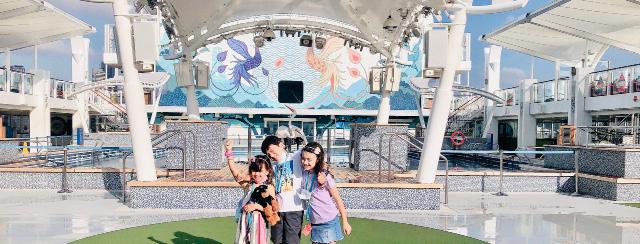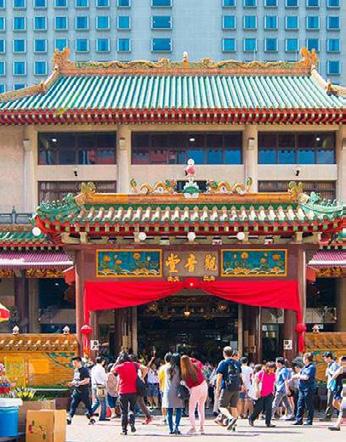
5 minute read
Singapore Snippets
Singapore Snippets
Discovering Items of interest on the red dot
Advertisement
Written by Marta Lubeck
Estuarine Crocodile near the trail
Sungei Buloh Wetland Reserve
I love spending time outdoors, and since moving to Singapore last summer, I have enjoyed going to many gardens, parks and nature reserves. One of my favorites so far is Sungei Buloh Wetland Reserve. Located in northwest Singapore, Sungei Buloh has one of the island’s few remaining mangrove forests and is home to rich biodiversity.
Trails
Each trail at Sungei Buloh is quite different, and it is worth exploring them all if time permits. A good starting point is the Migratory Bird Trail, which is 1.9 km long and loops around the Buloh Tidal Ponds. A few hides and an observation tower along the Sungei Buloh is home to a wide range of wildlife, including predators like the Malaysian water monitor lizard and the mangrove pit viper, and less intimidating animals like the smooth-coated otter. However, many visitors are particularly interested in sighting the estuarine crocodiles. These crocodiles

Buloh Tidal Ponds
trail are good vantage points from which to take pictures or observe the wetlands. This is a worthy trail to explore for a good chance of seeing crocodiles in their natural habitat. The Mangrove Boardwalk is a shorter trail encircling the mangrove forest. During low tide, the intricate tree roots of the mangroves come into full view. The Coastal Trail offers nice views of the Straits of Johor and Johor Bahru in Malaysia. A few pods located along the trail provide good resting points and photo opportunities.
Wildlife

Pneumatophores and knee & prop roots
are large creatures, but they are masters of disguise. It is easy to miss them, because they blend into their environment well, whether they are in the water or on the shore. Numerous signs on the paths warn visitors to stay away from the water’s edge, as crocodiles sometimes make their way onto the trails.
AWA member Marta Rabins remembers one of her visits to Sungei Buloh. “I was excited to have ‘discovered’ a croc laying quietly in wait about 10 feet off the raised gravel path where I was walking. This after seeing an even larger croc cruising along the water’s edge from a viewing platform where all the serious photographers were stationed.”

Mudskipper Pod
When asked about her experience at Sungei Buloh, AWA member Helena Antonin Cochrane recalls, “I saw the biggest spiders I’ve ever seen, and wild storks flew just a few feet over my head. On my visit there it was very sunny as I arrived, but a storm blew in while I was hiking the loop. I climbed a tower with a roof on it to protect myself from the storm, and watched as storks, pelicans and ducks huddled in the wind and rain on the edge of the swamp.”
Migratory Birds
Amateur and professional photographers alike come to Sungei Buloh hoping to get great shots of migratory birds making a pitstop at the wetland reserve. Singapore is a favored stopover for birds traveling on the East Asian-Australasian Flyway. The migratory bird season runs from October to March, when thousands of birds travel as far north as the Arctic Circle and as far south as Australia and New Zealand. According to a study published in December 2020, researchers from the National Parks Board also were able to identify birds traveling on the Central Asian-Indian Flyway, which crosses the Himalayas, thus placing Singapore at the intersection of two migratory bird flyways.
Tides
Due to the wetland reserve’s location in an intertidal area, low tide exposes parts of the tidal ponds and mangrove forest that cannot be seen during high tide. Arguably the most fun creatures at Sungei Buloh are the mudskippers. These agile amphibian fish can be observed skipping around the muddy waters at low tide and are quite a sight to see. Plank, stilt, prop, knee and pneumatophores.… These are types of roots particular to mangrove trees. They enable the mangrove forest to adapt to the changing tides and to efficiently take in oxygen during low tide. Many of these fascinating tree roots become submerged in high tide.
Outdoor Classroom
Sungei Buloh is as fun and educational for children as it is for adults. My friend and neighbor Maja had some advice for parents visiting Sungei Buloh (or any other natural habitat) with small children. “It helps to have a goal with kids. I created a nature treasure hunt and asked them to write down the first 10 animals they discovered on the trails.”
A Delicate Ecosystem
As magnificent as Sungei Buloh is, neither high tide nor low tide conceal the staggering amount of trash that builds up on its shores. This is particularly obvious along the Coastal Trail. The refuse ranges from plastic bottles to cans and Styrofoam containers, posing a real threat to Sungei Buloh’s ecosystem. According to statistics provided at the Visitor’s Centre, some 20,000 kilograms of trash were collected from the

Trash build-up in Sungei Buloh reserve’s beaches and mangroves during an annual one-day cleanup several years ago. The annual coastal cleanup activity was suspended last year due to COVID-19.
Getting There
The closest MRT station is Kranji on the Red Line, where you can connect to Bus 925 going to Kranji Way/Kranji Reservoir Park B. The bus stop is a short walk from the entrance. As the seasoned trekker knows, it is important to bring drinking water and to wear proper walking shoes and insect repellent. There are a couple of vending machines at the Wetland Centre selling snacks and drinks.
Marta moved to Singapore with her husband and two children in July 2020. She loves to explore Singapore with the AWA walking, hiking and photography groups.










